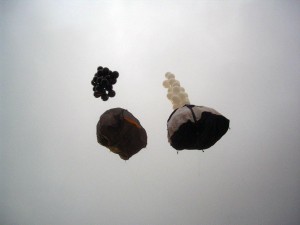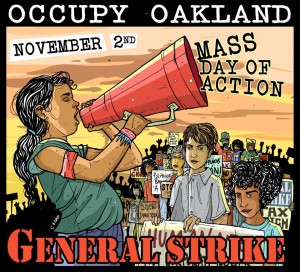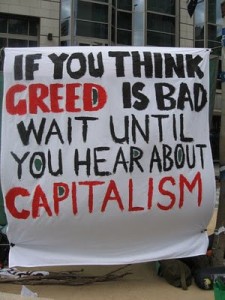 #Occupy. Where does it go from here? How ‘bout up? I’m not 100% serious, but it’s been fascinating to see how #Occupy has expanded occupation to mean more than parking our collective butts on a flat—or at least, horizontal—and usually (so far) outdoor surface. We geographers like to hammer on about how social spaces are so damn hypercomplex, but serious examination of spatiality often sidesteps the volumetric, the aerial, the vertical, the subterranean, and the ever finicky hydrological—particularly, when it comes to the sea. Lucky for us, these sometimes-overlooked aspects of spatiality have been subject to increasingly critical scrutiny by the geographically inclined. What makes volume, the aerial, and the vertical such powerful vehicles of protest is that they jarringly dethrone common sense understandings of space as two-dimensional and material. Continue reading
#Occupy. Where does it go from here? How ‘bout up? I’m not 100% serious, but it’s been fascinating to see how #Occupy has expanded occupation to mean more than parking our collective butts on a flat—or at least, horizontal—and usually (so far) outdoor surface. We geographers like to hammer on about how social spaces are so damn hypercomplex, but serious examination of spatiality often sidesteps the volumetric, the aerial, the vertical, the subterranean, and the ever finicky hydrological—particularly, when it comes to the sea. Lucky for us, these sometimes-overlooked aspects of spatiality have been subject to increasingly critical scrutiny by the geographically inclined. What makes volume, the aerial, and the vertical such powerful vehicles of protest is that they jarringly dethrone common sense understandings of space as two-dimensional and material. Continue reading
-
Recent Posts
Categories
- #Occupy
- Agriculture
- Antonio Gramsci
- Art
- Assemblages
- Bandits
- Boundaries
- Carl Schmitt
- City
- Critique
- David Harvey
- Development
- Dialectics
- Drugs
- Elites
- Everyday Life
- Forests
- Frontiers
- Gender
- Governmentality
- Guy Debord
- GWF Hegel
- Hegemony
- Henri Lefebvre
- Historical Materialism
- Historical-Geographies
- Illegality
- Insurgency/Counterinsurgency
- Interweb Motley
- Jester
- Karl Marx
- Land
- Law
- Maps
- Marxism
- Max Weber
- Media
- Michel Foucault
- Nation/Nationalism
- Networks
- Niccolo Machiavelli
- Peace
- Pirates
- Place
- Political Ecology
- Political Economy
- Post-Colonial
- Power
- Primitive Accumulation
- Race & Ethnicity
- Raymond Williams
- Scale
- Science & Tech.
- Security
- Sovereignty
- Spatiality
- Spectacle
- Territory
- Terror
- The Body
- The Sea
- The State
- Uncategorized
- Violence
- Work Hack
Archives
- February 2020
- September 2013
- August 2013
- June 2013
- May 2013
- April 2013
- March 2013
- February 2013
- January 2013
- December 2012
- November 2012
- October 2012
- September 2012
- August 2012
- June 2012
- May 2012
- April 2012
- March 2012
- February 2012
- January 2012
- December 2011
- November 2011
- October 2011
- September 2011
- August 2011
- July 2011
- June 2011
- May 2011
- April 2011
- March 2011
- February 2011
Fellow Tricksters
- Acme
- Antipode
- Cartographies of the Absolute
- Critical Legal Thinking
- Danger Room
- Decolonizing Solidarity
- Fragments & Correspondence
- Geographical Imaginations
- Gerard Toal
- Human Geography
- Monthly Review
- Mute
- New Left Review
- Open Geography
- Path to the Possible
- Peoples Geography
- Philosophy in a Time of Error
- Place Hacking
- Pop Theory
- Posthegemony
- Progressive Geographies
- Public Political Ecology Lab
- Radical Cartography
- Social Design Notes
- Society & Space
- Space and Politics
- Spatially Inclined
- Strange Maps
- Street Art Utopia
- The Disorder Of Things
- The Geography Collective
- Trevor Paglen
- Visual Complexity







